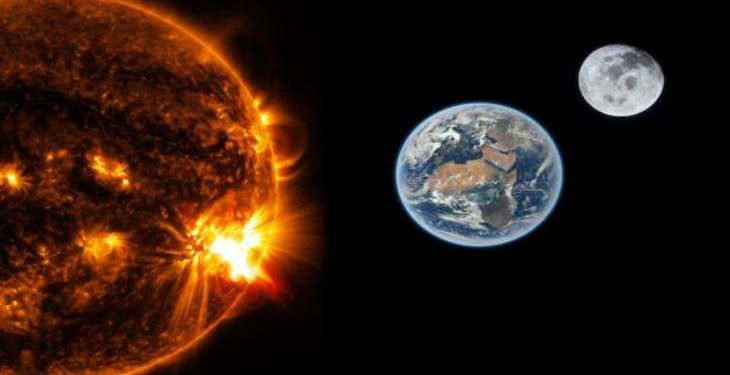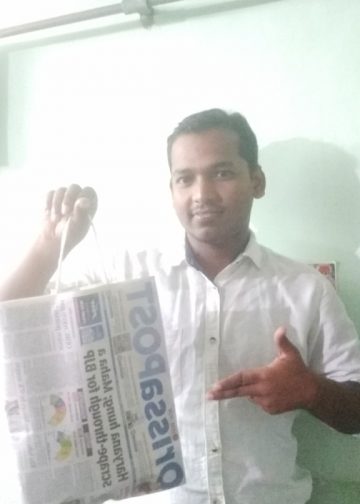Washington, June 18: The Moon contains clues to the ancient mysteries of the Sun, which are crucial to understanding the development of life, according to NASA scientists, including one of Indian origin.
Around four billion years ago, the Sun went through violent outbursts of intense radiation, spewing scorching, high-energy clouds and particles across the solar system. These growing pains helped seed life on early Earth by igniting chemical reactions that kept Earth warm and wet, said researchers at NASA’s Goddard Space Flight Center in the US.
These solar tantrums also may have prevented life from emerging on other worlds by stripping them of atmospheres and zapping nourishing chemicals, they said. Just how destructive these primordial outbursts were to other worlds would have depended on how quickly the early Sun rotated on its axis.
The faster the Sun turned, the quicker it would have destroyed conditions for habitability. This critical piece of the Sun’s history has bedeviled scientists, said Prabal Saxena, an astrophysicist at NASA’s Goddard Space Flight Center.
“We didn’t know what the Sun looked like in its first billion years, and it’s super important because it likely changed how Venus’ atmosphere evolved and how quickly it lost water,” said Saxena. “It also probably changed how quickly Mars lost its atmosphere, and it changed the atmospheric chemistry of Earth,” he said.
Saxena wondered why there is significantly less sodium and potassium in lunar regolith, or Moon soil, than in Earth soil, when the Moon and Earth are made of largely the same stuff. This question, revealed through analyses of Apollo-era Moon samples and lunar meteorites found on Earth, has puzzled scientists for decades — and it has challenged the leading theory of how the Moon formed.
Our natural satellite took shape, the theory goes, when a Mars-sized object smashed into Earth about 4.5 billion years ago. The force of this crash sent materials spewing into orbit, where they coalesced into the Moon. “The Earth and Moon would have formed with similar materials, so the question is, why was the Moon depleted in these elements?” said Rosemary Killen, a planetary scientist at NASA.
The two scientists suspected that one big question informed the other — that the history of the Sun is buried in the Moon’s crust. Saxena incorporated the mathematical relationship between a star’s rotation rate and its flare activity. This insight was derived by scientists who studied the activity of thousands of stars discovered by NASA’s Kepler space telescope.
They found the faster a star spins, the more violent its ejections. “As you learn about other stars and planets, especially stars like our Sun, you start to get a bigger picture of how the Sun evolved over time,” Saxena said.
Using sophisticated computer models, Saxena, Killen and colleagues think they may have finally solved both mysteries. Their computer simulations, described in the The Astrophysical Journal Letters, show that the early Sun rotated slower than 50 per cent of baby stars.
According to their estimates, within its first billion years, the Sun took at least nine to 10 days to complete one rotation. They determined this by simulating the evolution of our solar system under a slow, medium, and then a fast-rotating star.
The team found that just one version — the slow-rotating star — was able to blast the right amount of charged particles into the Moon’s surface to knock enough sodium and potassium into space over time to leave the amounts we see in Moon rocks today. “Space weather was probably one of the major influences for how all the planets of the solar system evolved, so any study of habitability of planets needs to consider it,” Saxena said.
The rotation rate of the early Sun is partly responsible for life on Earth. However, for Venus and Mars — both rocky planets similar to Earth — it may have precluded it. Earth’s atmosphere was once very different from the oxygen-dominated one we find today.
When Earth formed 4.6 billion years ago, a thin envelope of hydrogen and helium clung to our molten planet. However, outbursts from the young Sun stripped away that primordial haze within 200 million years.
As Earth’s crust solidified, volcanoes gradually coughed up a new atmosphere, filling the air with carbon dioxide, water, and nitrogen. Over the next billion years, the earliest bacterial life consumed that carbon dioxide and, in exchange, released methane and oxygen into the atmosphere.






































